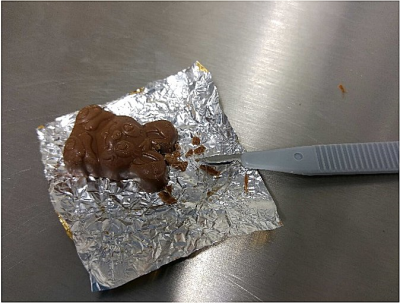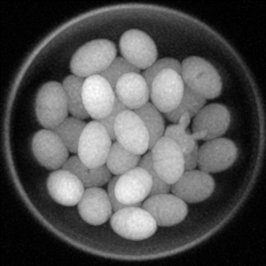0918
Extended Accelerated Systematic Tracking using Experimental Radiology: an Encephalo-Graphic Generation1Dept. of Presents, North Pole Research Agency, Rovaniemi, Finland, 2Atopof Amountain, Himalaya, Bhutan, 3Dept. for Sweets, Greenfield Institute, Ostereistedt, Germany
Synopsis
Detecting Easter bunnies is a task that is difficult to impossible for humans - thus, the use of artificial intelligence is more than warranted. In this work we present a confounded nut-work noisette (CNN) algorithm based on extended, accelerated systematic tracking in experimental radiology with encephalo-graphic generation (EASTER-EGG). Using this method we demonstrate that chocolate is a volatile resource especially when hungry researchers are present.
Introduction
Detection and tracking of legendary animals and subjects such as Big Foot, the Yeti, Santa Claus and others has so far only been realized with ancient and outdated methods including optical viewing or bear traps. These methods do neither use artificial intelligence nor magnetic resonance imaging, and are therefore inherently inferior which is also demonstrated by the low number of publications in this field [1]. In this work we propose a new method based on extended, accelerated systematic tracking in experimental radiology with encephalo-graphic generation (EASTER-EGG), which uses non-straight (off course) MRI and artificially incremented (AI) confounded nut-work noisette (CNN) algorithms to detect, extract, harvest and finally digest the mythical Easter bunny from a background of cocoa-shelled spherical objects (CSSO)[2].Materials and Methods
EASTER-EGG data were acquired using an unbelievably timid echo (UTE) sequence with its signature Rabbit Feigning (RF) pulse shape (Fig. 1) to lure the subject into the hare cage of an open bore magnet. The dissipated RF power in the bait was limited to 0.001 Watts·rung [2] to avoid pre-mature phase changes in the CSSOs [3]. The experiment was approved by the local IRB (Nr.: I8U-E*-2020). Phantom preparation was performed by a trained plastic surgeon with more than 4 years of eating experience with forks and knives (Fig. 2).After image acquisition the hyper-dimensional data were Fourier-transmogrified, and the phantom material was thrown to the floor to be analysed manually by several unfortunate volunteers (ground truth). Then, a completely nutty net ($$$CNN$$$, [4]) with the convoluted nut-work noisette (CNN) algorithm was trained on photographs of cute kittens that we downloaded from the internet to search for whatever was left over. The CNN [4a] is essentially based on a greedy downslope head-over-heals method with some really important modifications that we have carefully hidden in our obfuscated code (not to be found on github [5]). MR images (Fig. 3) were then projected onto television sets (POTS) and were shown to the CNN to prove the superiority of AI in general.
Results
The CNN being a $$$CNN$$$ with CNN did not like the input data which was taken as a clear sign for the overwhelming intelligence of the algorithm. Based on our prior experience with MRI with virtually no data [6] we concluded that no further experiments were necessary. The measurements could not have been repeated anyway due to the sparse seasonal appearance of this mythical creature [7] and the sudden disappearance at the end of the experiment [8].Conclusion
AI is the best method to detect Easter bunnies when it is combined with MRI. For a wide-spread application massive research funding programs must be initiated to develop low-cost portable MRI systems for garden use. The methods presented in this work might also be applied to underwater imaging at Loch Ness using the earth’s magnetic field.Acknowledgements
This work was supported by the Lost & Found Foundation under grant number UR2GRT. Only non-alcoholic acronym finders were employed.References
[1] N. Othing: Why AI has to be in it! BiggerData (2021), -1:3,14-9,77.
[2] T. Turner: What’s chocolate got to do with it? Parlophone (1993)
[3] M. Elting, et al. RF cooking with chocolate is not a good idea. Magn Reson Cook (2019) 17: 1
[4] Note the use of the different font!
[4a] We are using yet another font here to simplify the notation.
[5] G. Ollum. My precious – why you will never get it. Lord of the Rings (Mordor Press)
[6] K. Space. High-frequency data is highly overrated: be mean with only one point at k=0. Small Data Gazette (1973)
[7] J. Hennig. E*-Bunnies—how to find, recognize, use or avoid them. Mythical MRI (1891) 0:0-0
[8] D. Scully, F. Moulder. Sudden chocolate disappearences explained: theobromine traces lead the way. Extra Files (1985) X: xx-xx
Figures


